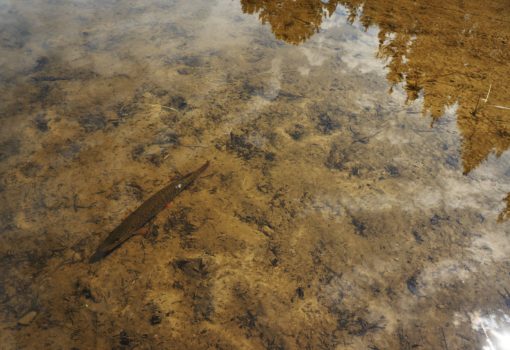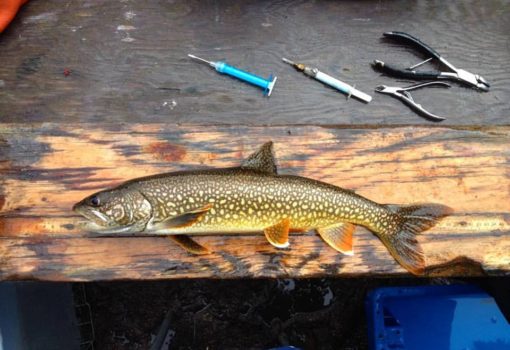
Ecosystem-level effects of nanosilver release
Contaminants Bioenergetics Food web ecology
Nanosilver is an emerging contaminant with broad potential for environmental release; it is an antimicrobial that is in many, many consumer products and is easily released into wastewater streams through laundry (it’s in clothes, washing machines and detergents). It is clear that nanosilver acts differently on organisms than elemental silver, suggesting that a different set of regulations for environmental release are required. At the IISD-Experimental Lakes Area, we are working in collaboration with researchers from Trent University to evaluate the impacts of a whole-lake nanosilver addition on fish populations. Our work led by Laura Murray demonstrated the direct impact of nanosilver exposure on fish stress and metabolism at environmentally relevant concentrations in laboratory settings, and a team of students (Lauren Hayhurst, Tyler Ripku Brenden Slongoand Kim Geils) have evaluated the effects on population densities, feeding ecology and energetics of fish during the whole-lake experiment. Ongoing work looks to determine the long-term persistence of silver in fish tissues, as well as summarize these results, comparing observed changes in fish production with those of gross conversion efficiency, all of which points to a large reduction in nearshore resources during exposure.



